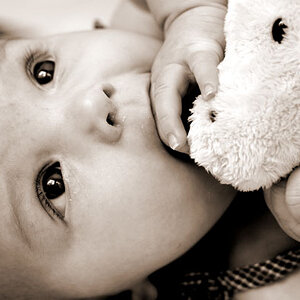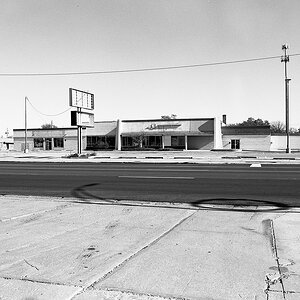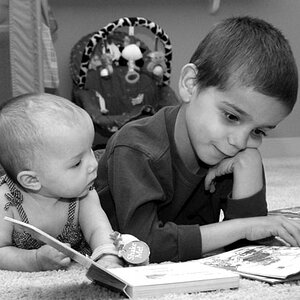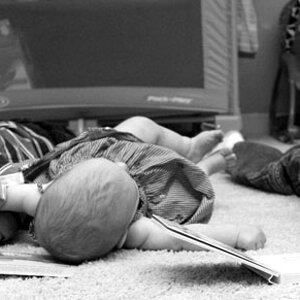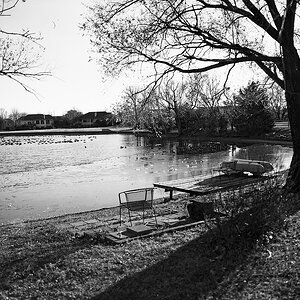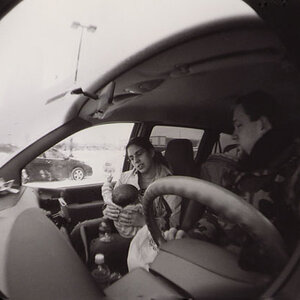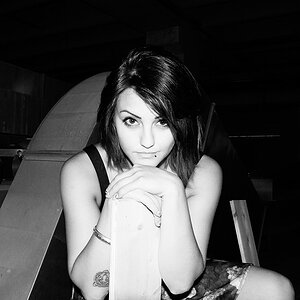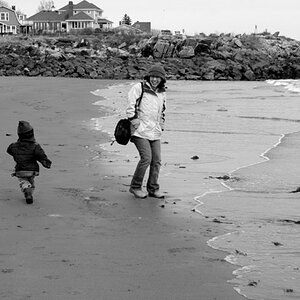Bobby Ironsights
TPF Noob!
- Joined
- Dec 3, 2006
- Messages
- 346
- Reaction score
- 21
- Location
- Thunder Bay, ON, Canada
- Can others edit my Photos
- Photos OK to edit
Alrighty, I took this photo with my Canon Elan II using a f1.8 50mm wide open.
I used bulk rolled arista.edu film in reloadable metal cassetes, then I souped in D76, and fixed in Fixer 24.
I then printed on my Beseler, at aperture F11 for 31 seconds on Arista, grade II resin coated paper, developed in Dektol at 1:2 and also fixed in fixer 24. I printed normally but in a non-hardening fixer for later toning.
After re-hydrating the emulsion in distilled water,I souped it in a bleaching sepia toner, probably toxic as hell, bought by the school back in 93/94 and seemingly unaffected by the ravages of time. I rocked gently for a full six minutes and rinsed for ten minutes before popping it into the print dryer.
The effect is quite nice. Its a solid brown sepia, run to completion.
The toner converts the silver chloride grains in the paper to silver sulphate. This was done to increase the amount of time the photograph would last in an acidic enviornment, such as the one around the turn of the century, when most homes still burned coal for heat, which put small but not insignificant amounts of sulphuric acid in the air, but it looks nice too, warmer than a true black and white.
Then I completely ruined it by scanning on a cheap flatbed document scannner because I wanted to show my work online just like all the cool kids.
Now it just looks......well....Out of focus and tonal range challenged. :sad anim:
I need a better flatbed scanner to scan my 8x10 prints, or I need to stop trying to get my peer review online. Any suggestions?
Oh well, here's what a photocopy would look like.

I used bulk rolled arista.edu film in reloadable metal cassetes, then I souped in D76, and fixed in Fixer 24.
I then printed on my Beseler, at aperture F11 for 31 seconds on Arista, grade II resin coated paper, developed in Dektol at 1:2 and also fixed in fixer 24. I printed normally but in a non-hardening fixer for later toning.
After re-hydrating the emulsion in distilled water,I souped it in a bleaching sepia toner, probably toxic as hell, bought by the school back in 93/94 and seemingly unaffected by the ravages of time. I rocked gently for a full six minutes and rinsed for ten minutes before popping it into the print dryer.
The effect is quite nice. Its a solid brown sepia, run to completion.
The toner converts the silver chloride grains in the paper to silver sulphate. This was done to increase the amount of time the photograph would last in an acidic enviornment, such as the one around the turn of the century, when most homes still burned coal for heat, which put small but not insignificant amounts of sulphuric acid in the air, but it looks nice too, warmer than a true black and white.
Then I completely ruined it by scanning on a cheap flatbed document scannner because I wanted to show my work online just like all the cool kids.
Now it just looks......well....Out of focus and tonal range challenged. :sad anim:
I need a better flatbed scanner to scan my 8x10 prints, or I need to stop trying to get my peer review online. Any suggestions?
Oh well, here's what a photocopy would look like.



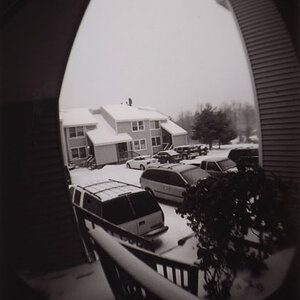
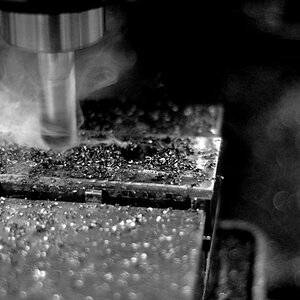
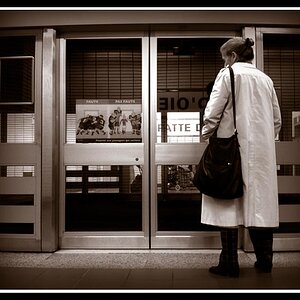
![[No title]](/data/xfmg/thumbnail/41/41490-6af71315284539e04ae1878cda0d613f.jpg?1619739818)
